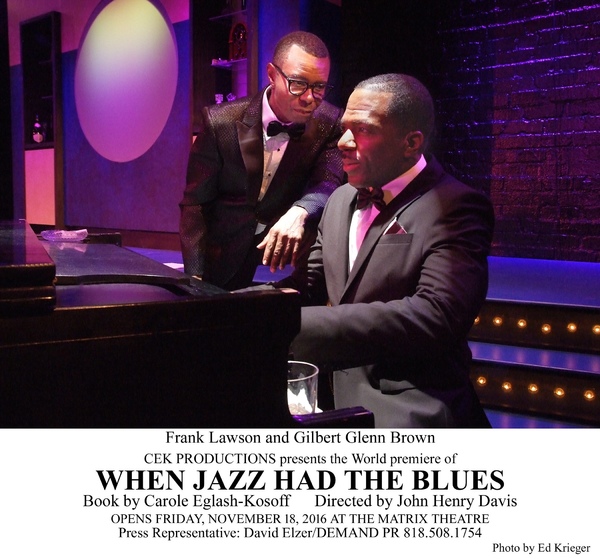
When Jazz had the Blues looks at the complex relationship between two giants of the jazz world, Duke Ellington and Billy Strayhorn. They collaborated for some 28 years, composing and arranging hundreds of songs, symphonies and instrumentals that thrilled people around the world and made them famous and rich. That’s not to say, though, that all was sweetness and light between these talented African-American partners. As the piece shows in its world-premiere run at the Matrix, the two men battled behind the scenes over questions of credit and fairness. Ellington, who was already a successful bandleader when he first met Strayhorn in 1936, often left the latter’s name off many of the compositions they worked on together — or simply listed him as arranger. Ellington’s rationale was that it was his name that made the public buy these works. Their personalities were different, as well: Ellington (played powerfully by Boise Holmes) was an Alpha male: charming, egomaniacal, charismatic. Strayhorn (the marvelous Frank Lawson) was Beta: small, sensitive, retiring. His friend Lena Horne (Michole Briana White) once described him as “a little brown owl.” Strayhorn was also homosexual, a fact that Carole Eglash-Kosoff explores unabashedly in her libretto, detailing his longtime love affair with pianist Aaron Bridges (Gilbert Glenn Brown). Although When Jazz had the Blues does dramatize the Ellington/Strayhorn relationship pretty accurately, some big liberties are taken. Ellington and Strayhorn often burst into song, something they never did in life (correction: Strayhorn sang once, on his 1946 album, “Lush Life.”) And White as Lena Horne comes off as a brassy belter, when in actual fact the latter was more of a pop vocalist than a jazz singer. But enough of this pedantry. The show aims to entertain, not educate, and this it does with panache and pizzazz. Helping in that regard is the six-piece live band that plays the hell out of the show’s many songs and dance numbers (choreographed exuberantly by Cassie Crump). Michael Mullen’s dazzling costumes are a big plus, as well; ditto the superb work by director John Henry Davis, set designer Se Hyun Oh and lighting designer Leigh Allen. When you add the impressive contributions of the 11 actors in the cast, all of whom sing and dance like Broadway pros, you end up with quite an amazing production, one that you rarely encounter in L.A.’s intimate theatre scene. Hearing such beloved jazz songs as “The Man I Love,” “Lush Life,” “Take the A Train,” and “Drop Me Off in Harlem,” to name but a few, gladdens the heart as well. In its re-creation of jazz’s golden years (20s through 50s), When Jazz had the Blues covers a lot of territory in a relatively short time, hitting hard on its high notes but not completely neglecting its low notes, such as the racism and exploitation experienced by every black musician and singer in the country during that era.
